EE grasses on Three UK for its 5G advertising
Three UK has run an ad campaign claiming its 5G network is the only ‘real’ one. Unsurprisingly other 5G providers are unhappy about this and at least one had complained.
August 20, 2019
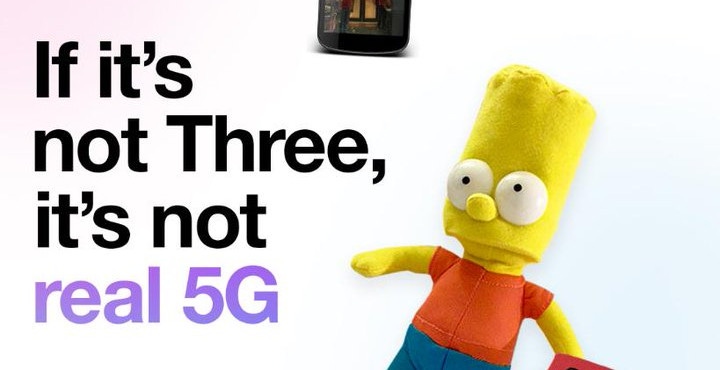
Three UK has run an ad campaign claiming its 5G network is the only ‘real’ one. Unsurprisingly other 5G providers are unhappy about this and at least one had complained.
The UK Advertising Standards Authority has been forced to take precious resource away from enforcing gender politics dogma to look into Three’s 5G ad campaign. The ASA confirmed to Telecoms.com that it has received six complaints about an ad by Three claiming to provide the only ‘real’ 5G, with one of them coming from BT.
We contacted EE, which provided the following statement: “Three’s claim to be the only real 5G network is entirely false, and deliberately aimed at misleading consumers. Our customers have been using real 5G since we launched the UK’s first 5G network, back in May.”
And, of course, we also spoke to Three UK, which gave us this statement: “Our advert is to inform consumers that we will offer the fastest 5G network, based on Three having three times as much 5G spectrum as any other operator. We are also the only operator to have 100 MHz of contiguous spectrum. ITU considers this the gold standard for 5G, enabling consumers to take full advantage of what 5G has to offer.”
It all seems to come down this 100 MHz contiguous block of spectrum and the value the ITU places on it in the context of 5G. Here’s a slide from a Nokia presentation titled Minimum Technical Performance Requirements for IMT-2020 radio interface(s) [i.e. 5G] that clearly state “The requirement for bandwidth is at least 100 MHz.” However it also states “The bandwidth may be supported by single or multiple RF carriers.”
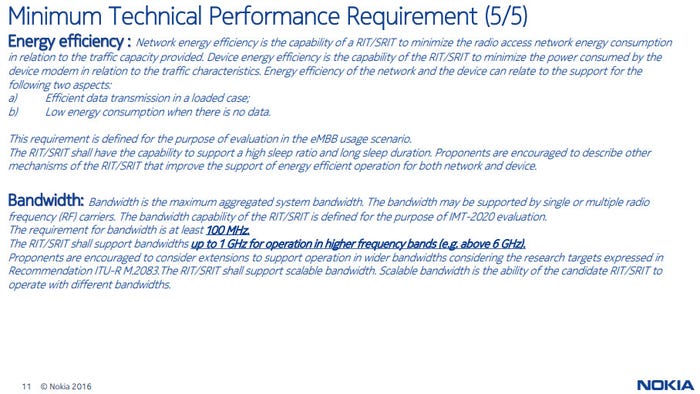
That caveat would appear to undermine Three’s claim that only its contiguous 100 MHz chunk meets the ITU’s minimum requirements. But when we put that to Three their spokesperson countered that, since carrier aggregation isn’t currently supported by 5G chipsets, that stipulation is irrelevant.
Three reckons this complaint is evidence that its competitors are worried about Three’s strong position in 5G spectrum, which is wonderfully ironic when you consider Three has spent a decade moaning about the opposite imbalance in 4G spectrum. Three is presumably OK with the situation now that things have apparently swung in its favour, so much so it was happy to provide us with a few slides.
The first offers a look at the current UK 5G spectrum situation, following the 3.4 GHz spectrum auction last year. Most of Three’s 5G spectrum is in the 3.6-3.8 GHz band, however, and we’re not sure what the ‘future’ bar signifies, but Three does seem to be at a distinct advantage. So much so that its competitors have apparent been moaning to Ofcom too, as quoted in the second Three slide. The last one represents the results of some Three testing, which is designed to show the unique download speed benefits of having 100 MHz of contiguous 5G spectrum.
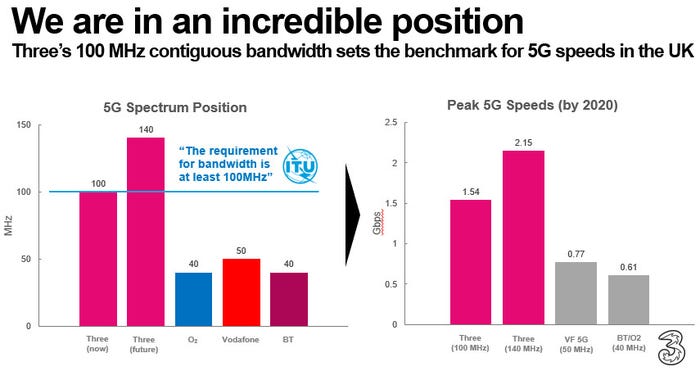
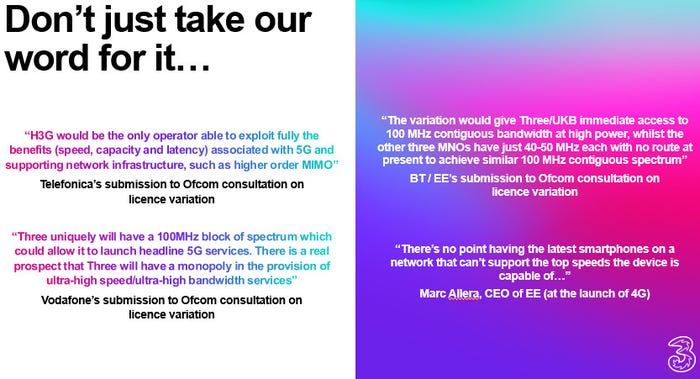
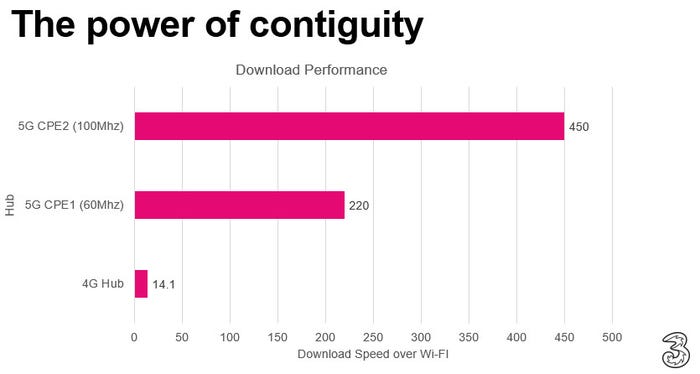
To be honest we find it hard enough to keep track of who has what spectrum, and why we should care, so we’re certainly not in a position to critique Three’s claims on a technical level. However they do seem to serve as a plausible defense of any claim it might make to have at least the potential to provide greater 5G download speeds than its competitors.
Where we still have some sympathy with the ASA complaint, however, is with the use of the term ‘real’. If Three had simply gone with ‘fastest’, as it did in the above statement, then EE probably wouldn’t have a leg to stand on. But by instead using the term ‘real’ Three seems to inferring rival 5G services are somehow illegitimate.
It will be down to the ASA to sift through the 5G standard, including the above ITU parameters, to determine whether or not only a 5G service that is able to call upon at least 100 MHz of contiguous qualifies as ‘real’. Since the ASA seems more concerned with thought policing these days we have to question whether it has retained the expertise needed to perform its supposedly core function.
About the Author(s)
You May Also Like











_1.jpg?width=300&auto=webp&quality=80&disable=upscale)


.png?width=800&auto=webp&quality=80&disable=upscale)